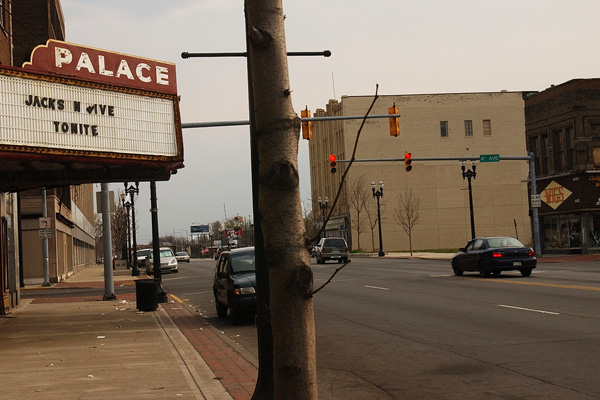
Photo: E. Jason Wambsgans/Chicago Tribune
Gary, Indiana, 2005
Not long ago, America passed an important statistical barrier, as Emily Badger writes: "Today, more poor people live in the suburbs (16.4 million of them) than in U.S. cities (13.4 million), despite the perception that poverty remains a uniquely urban problem." I think calling it "uniquely" urban is a bit off—while I might be a bit overinvested in Appalachian history, the problem of rural poverty is, I think, pretty well recognized, going back through the War on Poverty in the 1960s and rural electrification before that.
But the focus on suburban poverty is fairly new. It preceded the post-2010-Census statistics, which intensified the focus. But to see why it's become such an issue of late, and why poverty was so linked with urban centers, it helps to see the movement of the poor people over time.
Margery Turner and Graham MacDonald of the Urban Institute built a mapping application that allows you do do just that, at least for the period from 1980-2010 and the decades in between. Looking down at the poverty of Chicagoland from space, it almost looks like a sand painting that's been blown from the east. The racial patterns, which divide the city into slices, like a cake, are actually similar over time—they just extend farther out.
The shift is really quite dramatic, in broad terms:
Between 2000 and 2007/11, Cook County's poverty rate moved from 13.5 percent to 15.8 percent; at the beginning of the decade, its poverty rate was highest in the region, but by 2007/11 it had been surpassed by DeKalb County and Lake County, Indiana, where the rates jumped from 11.4 to 15.9 percent and 12.2 to 16.6 percent, respectively.
[snip]
Chicago city’s share of its CBSA’s population below poverty declined from a stunning 60 percent of the total to 48 percent of the total between 2000 and 2007/11.
It highlights something important: the decrease in Chicago's population over the past few decades has gotten a lot of attention, but not the more recent decrease in population in the surrounding cities:
Chicago’s suburban poverty growth stems partly from the hollowing out of older inner suburbs noted by Lucy and Phillips (2003), Hanlon (2010), and others, in which who have more resources move away and are not replaced by others, leaving poor and near-poor households behind. Although the metropolitan area gained population in the 2000s, 122 of the Chicago region’s municipalities lost population. Among these declining cities, the average increase in poverty was 4.2 percentage points, compared with an average poverty growth of 3.1 percentage points in the growing cities.
Indeed, the best known and most severe poverty rate increases in Chicago occurred in a series of suburbs south of Chicago that lost population, including Harvey, Chicago Heights, and Calumet City. This zone of spiraling poverty—increases of 8 to 12 percentage points—amid population loss extends into northwest Indiana. The poverty rate in Gary and East Chicago exceed 30 percent citywide; Hammond’s poverty rate increased from 14 to 22 percent over the decade. Among these cities, only Hammond had a majority-white non-Hispanic population in 2000, and both Gary and Harvey were at least 80 percent black.
It's a considerable challenge—the problem stretches across cities, counties, and states, requiring difficult coordination across governments that are both competing and interdependent. And more recently, the problem has been worse for those governments that have fewer resources to address it.


